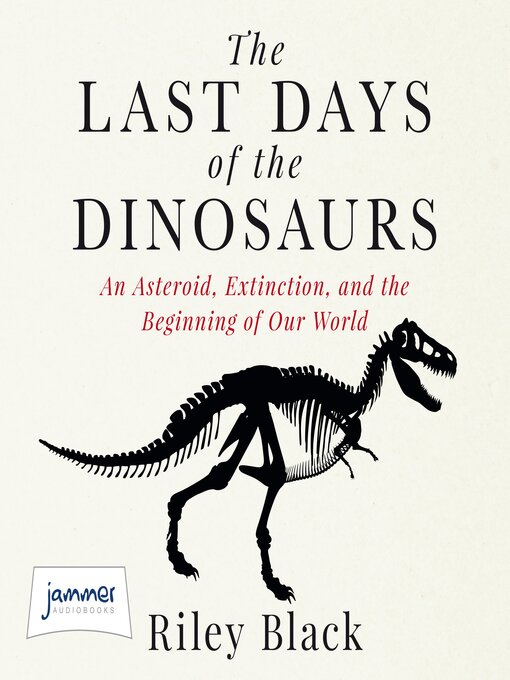The Last Days of the Dinosaurs
An Asteroid, Extinction, and the Beginning of Our World
Picture yourself in the Cretaceous period. It's a sunny afternoon in the Hell Creek of ancient Montana 66 million years ago. In a matter of hours, everything here will be wiped away. Tyrannosaurus rex will be toppled from their throne, along with every other species of non-avian dinosaur no matter their size, diet, or disposition. They just don't know it yet. An asteroid some seven miles across slammed into the Earth, leaving a geologic wound over 50 miles in diameter. In the terrible mass extinction that followed, more than half of known species vanished seemingly overnight. But this worst single day in the history of life on Earth was as critical for us as it was for the dinosaurs, as it allowed for evolutionary opportunities that were closed for the previous 100 million years.
"A marvelous look at what happened after the asteroid hit Earth will make readers feel like a kid discovering dinosaurs for the first time." -NEWSWEEK
-
Creators
-
Publisher
-
Release date
October 1, 2022 -
Formats
-
OverDrive Listen audiobook
- ISBN: 9781004095377
- File size: 225279 KB
- Duration: 07:49:19
-
-
Languages
- English
-
Reviews
-
Publisher's Weekly
Starred review from January 24, 2022
“The worst single day in the history of life on Earth” came 66 million years ago when a space rock slammed into Earth and subsequently wiped out about 75% of living species, according to journalist Black (Skeleton Keys) in this impressive account. Black begins by exploring how creatures living in the “Hell Creek Formation beds of central Montana and the Dakotas” experienced that day, imagining the zone from the time of the impact, and the first day (the sun is “blocked by the choking smoke”), month (the area is “a skeleton of what it once was), year (forests are “skeletal), and century following. Black avoids the pitfall of overdramatizing, instead bringing the global disaster to life in elegant prose, imagining, for example, the actions of a young male Edmontosaurus, an 18-foot-long herbivore, and a 25-foot-long armored Ankylosaurus as the world around them changes. She effectively demonstrates the complexity and interdependence of various ecosystems, and the appendix is an extra treat—in it, Black explains how scientists know as much as they do about the behavior and physiology of species alive millions of years ago, and identifies where she used literary license to set a scene. This is top-drawer science writing.
-
Loading
Why is availability limited?
×Availability can change throughout the month based on the library's budget. You can still place a hold on the title, and your hold will be automatically filled as soon as the title is available again.
The Kindle Book format for this title is not supported on:
×Read-along ebook
×The OverDrive Read format of this ebook has professional narration that plays while you read in your browser. Learn more here.

